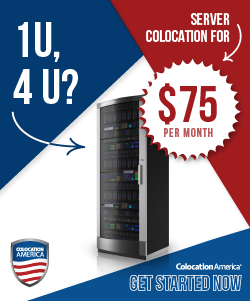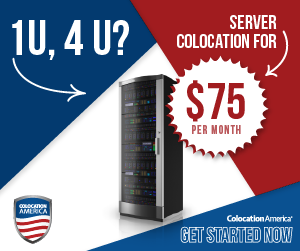How MSPs provide their services
-
I will likely change the title as the discussion progresses, but I have a n00b question about MSPs (and by extension ITSPs).
Hypothetical scenario: Let's say there is a small office of 20 computers or so (running Windows). That office has a file server, domain controller, a few printers, switch, and router/firewall.
If this company were to hire a provider to improve / manage the IT infrastructure going forward. What kind of tools would the provider use for managing the workstations and servers (applying updates, installing software, etc.)?
I've read a bit about RMM software, and I know there are tools like Screen Connect for accessing computers. So I imagine the above situation would probably be handled something that has an agent installed on each workstation and server, which the provider uses to access the asset and do the above tasks.
-
@eddiejennings Yes it would be an RMM. You install a probe which downloads updates from your central server for antivirus or whatever other service you provide and pushes them out to your agents. The agent allows you to remotely connect to the PC with a lot of different options for a connection: RDP, Telnet, SSH, etc. I also can interact directly with the system shell.
I personally do not like putting all of my eggs in one basket, but my company does. A lot of people on ML use vary levels of what the RMM is capable of.
-
Today options like Salt, Ansible and others can be used to make the PCs as near stateless as possible. You can get reports and push commands to the PCs with these.
Screenconnect and other technologies can be used for remote access to assist at the GUI level if that is needed.
-
@eddiejennings said in How MSPs provide their services:
If this company were to hire a provider to improve / manage the IT infrastructure going forward. What kind of tools would the provider use for managing the workstations and servers (applying updates, installing software, etc.)?
Sky is the limit. MSPs tend to rely on RMM. ITSP tend to not and normally work with your tools.
MSP you change everything to work under them. ITSP implies nothing of the sort.
-
@eddiejennings said in How MSPs provide their services:
I've read a bit about RMM software, and I know there are tools like Screen Connect for accessing computers. So I imagine the above situation would probably be handled something that has an agent installed on each workstation and server, which the provider uses to access the asset and do the above tasks.
Depends a lot. RMM would normally include something like ScreenConnect as part of the package. But there are so many factors. If you have dedicated support people at the ITSP, they might be sitting in the office with you, or be on a VPN.
-
@scottalanmiller said in How MSPs provide their services:
@eddiejennings said in How MSPs provide their services:
If this company were to hire a provider to improve / manage the IT infrastructure going forward. What kind of tools would the provider use for managing the workstations and servers (applying updates, installing software, etc.)?
Sky is the limit. MSPs tend to rely on RMM. ITSP tend to not and normally work with your tools.
MSP you change everything to work under them. ITSP implies nothing of the sort.
That makes sense. With the ITSP normally working with your tools, am I right in thinking that implies that the ISTP is designed to augment whatever IT staff you might have, rather than replace it?
-
@eddiejennings said in How MSPs provide their services:
@scottalanmiller said in How MSPs provide their services:
@eddiejennings said in How MSPs provide their services:
If this company were to hire a provider to improve / manage the IT infrastructure going forward. What kind of tools would the provider use for managing the workstations and servers (applying updates, installing software, etc.)?
Sky is the limit. MSPs tend to rely on RMM. ITSP tend to not and normally work with your tools.
MSP you change everything to work under them. ITSP implies nothing of the sort.
That makes sense. With the ITSP normally working with your tools, am I right in thinking that implies that the ISTP is designed to augment whatever IT staff you might have, rather than replace it?
Well either actually. We have gone into many companies and replaced staff that is leaving. In the same vein, we have gone in as overflow, or l1 or even Server Support only. Whatever combination is needed.
-
@eddiejennings said in How MSPs provide their services:
@scottalanmiller said in How MSPs provide their services:
@eddiejennings said in How MSPs provide their services:
If this company were to hire a provider to improve / manage the IT infrastructure going forward. What kind of tools would the provider use for managing the workstations and servers (applying updates, installing software, etc.)?
Sky is the limit. MSPs tend to rely on RMM. ITSP tend to not and normally work with your tools.
MSP you change everything to work under them. ITSP implies nothing of the sort.
That makes sense. With the ITSP normally working with your tools, am I right in thinking that implies that the ISTP is designed to augment whatever IT staff you might have, rather than replace it?
ITSP is a larger umbrella term, that MSP is a member of. So ITSP might do what you say here, or might be like an MSP. It could do almost anything. ITSP is a large category of companies that provide IT. MSP is just one well known, popular sub-category of that that is more formally designed.
-
@dashrender said in How MSPs provide their services:
Today options like Salt, Ansible and others can be used to make the PCs as near stateless as possible. You can get reports and push commands to the PCs with these.
Screenconnect and other technologies can be used for remote access to assist at the GUI level if that is needed.
This is heavily where we are focussing. Salt via SodiumSuite for control, and ScreenConnect for remote access.
-
@wirestyle22 said in How MSPs provide their services:
I personally do not like putting all of my eggs in one basket, but my company does. A lot of people on ML use vary levels of what the RMM is capable of.
It's IT, there are no eggs.
-
@scottalanmiller said in How MSPs provide their services:
@wirestyle22 said in How MSPs provide their services:
I personally do not like putting all of my eggs in one basket, but my company does. A lot of people on ML use vary levels of what the RMM is capable of.
It's IT, there are no eggs.
When you have solarwinds there are
-
Comodo has a free RMM option that isn't terrible. I'm just not a fan of the other options on the market as they usually include many features I won't use/need. For my smaller clients, they hardly ever have a domain controller and for most of them, I'll recommend options like JumpCloud for authentication and set PCs to auto-update Windows/MS Office. That doesn't take care of the other installed software but for those instances where I need to manage the entire update cycle, I've used Comodo One RMM. For clients with onsite servers, I'll VPN in on a scheduled basis for scheduled maintenance/updates.
We're clearly not a large MSP so this has worked for us.
-
@nashbrydges said in How MSPs provide their services:
Comodo has a free RMM option that isn't terrible.
Oh man, we tried that and our phones just wouldn't stop ringing after that. They hounded us and hounded us to make sure we never used them again.
-
@scottalanmiller said in How MSPs provide their services:
@nashbrydges said in How MSPs provide their services:
Comodo has a free RMM option that isn't terrible.
Oh man, we tried that and our phones just wouldn't stop ringing after that. They hounded us and hounded us to make sure we never used them again.
Damn! Knock on wood, so far things are working for me.
-
@scottalanmiller said in How MSPs provide their services:
@nashbrydges said in How MSPs provide their services:
Comodo has a free RMM option that isn't terrible.
Oh man, we tried that and our phones just wouldn't stop ringing after that. They hounded us and hounded us to make sure we never used them again.
I'm not the only one this happened to?
-
@coliver said in How MSPs provide their services:
@scottalanmiller said in How MSPs provide their services:
@nashbrydges said in How MSPs provide their services:
Comodo has a free RMM option that isn't terrible.
Oh man, we tried that and our phones just wouldn't stop ringing after that. They hounded us and hounded us to make sure we never used them again.
I'm not the only one this happened to?
We've heard it from a few people. Only so many have tried them. We told them to stop but they were determined that we never do business with them again. We obliged.
-
As a MSP gets larger, to be really efficient, you need a RMM and a PSA to be really efficient. As far as the RMM I'll add that the paid tools like Connectwise Automate (LabTech) and Kaseya go way beyond the stuff you can string together for free. Sure there is probably a developer out there that could string stuff together, but at what cost?
-
The PSA (Professional Services Automation) automates all the business side that needs to happen so you get paid. You put your sales templates in, then convert them to agreements and as you work tickets, it keeps track of how stuff gets billed.
-
When I started as a MSP I used some of the free tools for some tasks and paid for ScreenConnect and a few other things. Then I kind of hit a wall where the free tools wouldn't let me do things that I needed for some of my more demanding clients. I decided to go all in on the MSP side and start moving away from break fix, so I needed more automation to be more efficient. So far, I'm glad I did.
To answer your question about tools, for a new client, I spent 15 minutes putting an agent on his network. Then later that day I emailed him a report that showed all the machines that were missing patches, running AV or not, running questionable software, etc. Graphs, colorful pictures, etc right out of the box. 20 minutes of my time. Have you ever tried running a report out of Spiceworks?
-
In your hypothetical example, my tools allow me to install patches on the hyper v server on Saturday night, and patch and reboot the VMs Monday night. I can also create different groups for the workstations and patch them different nights instead of the way WSUS and group policies handle it.














